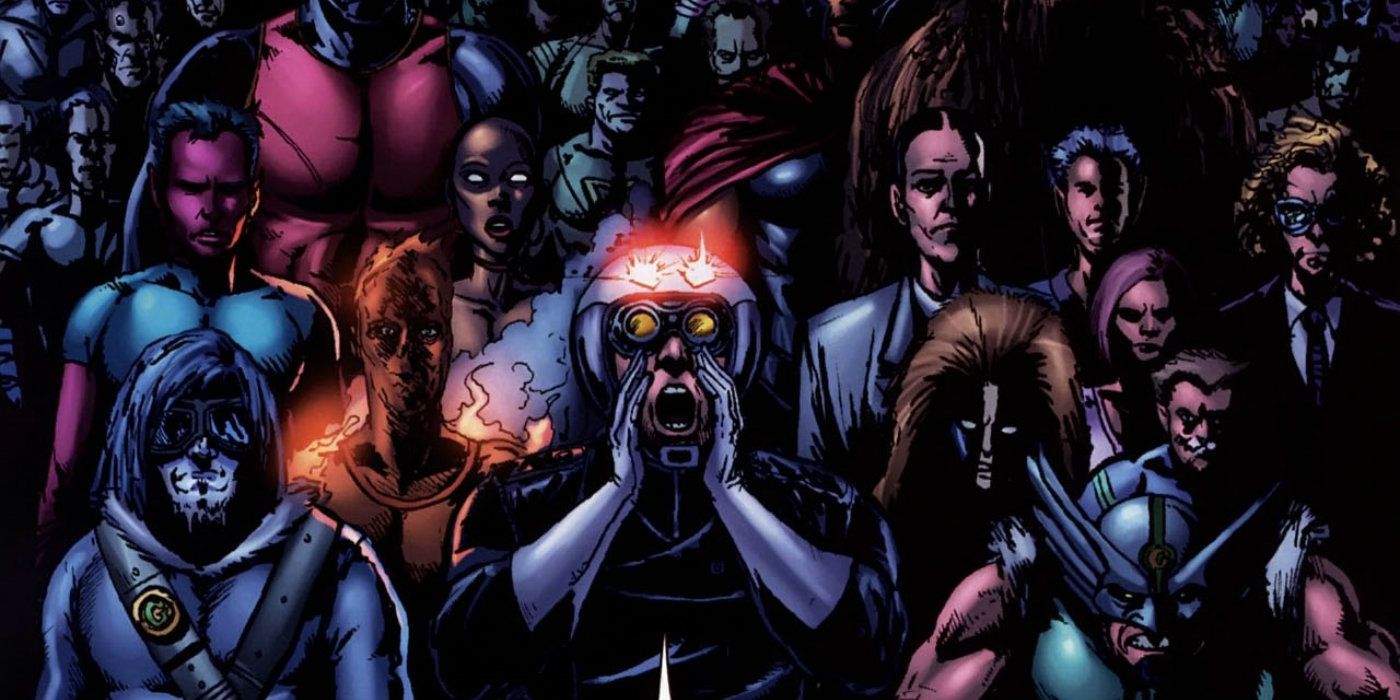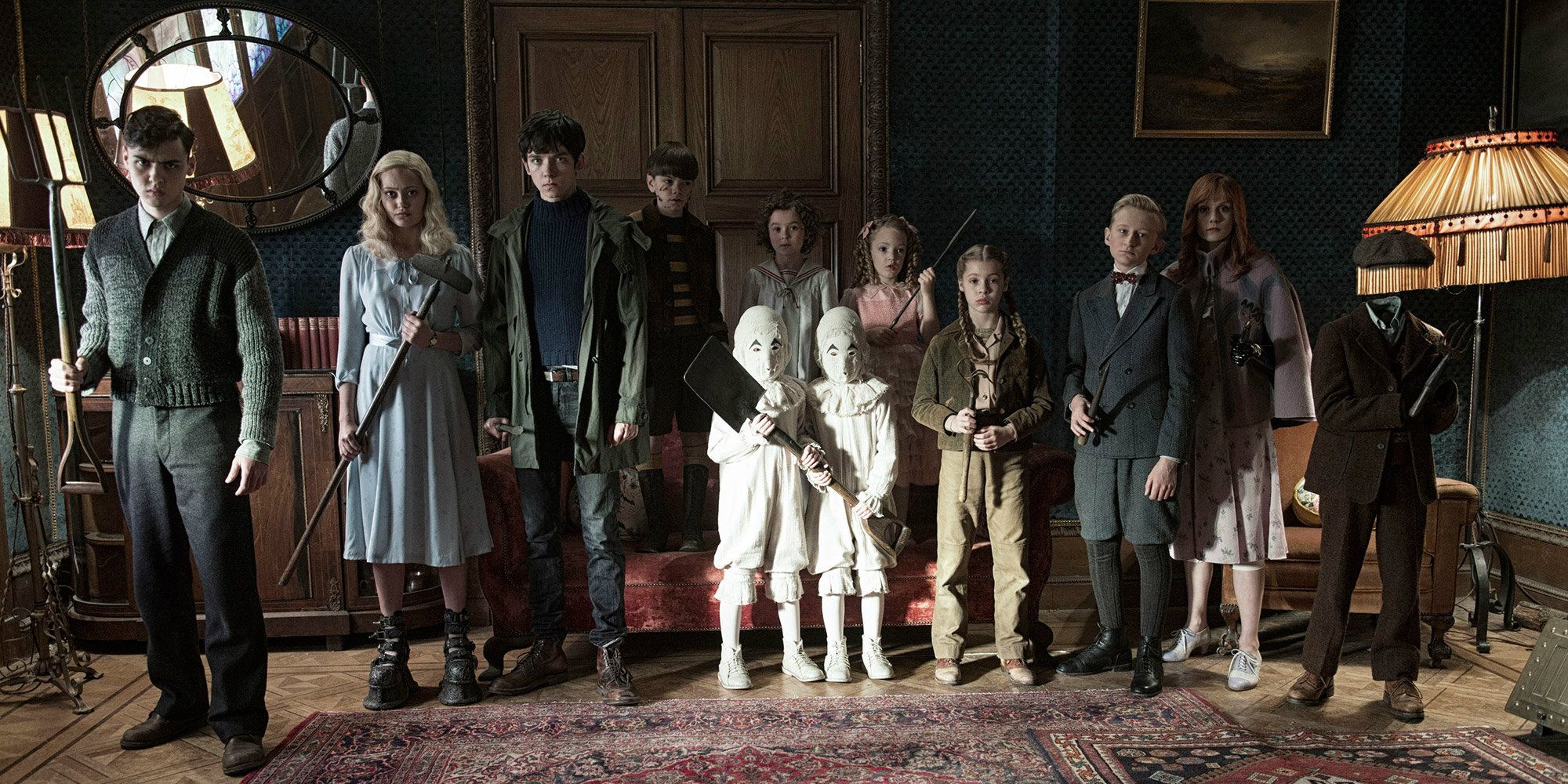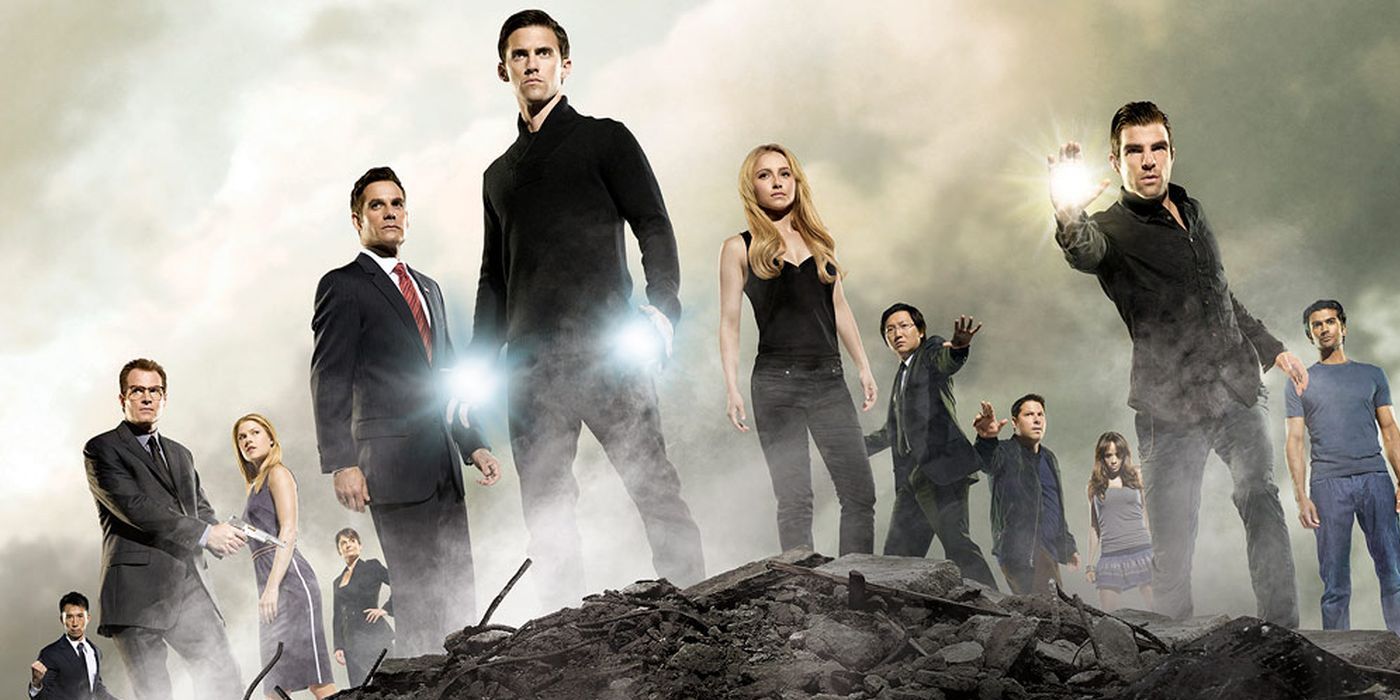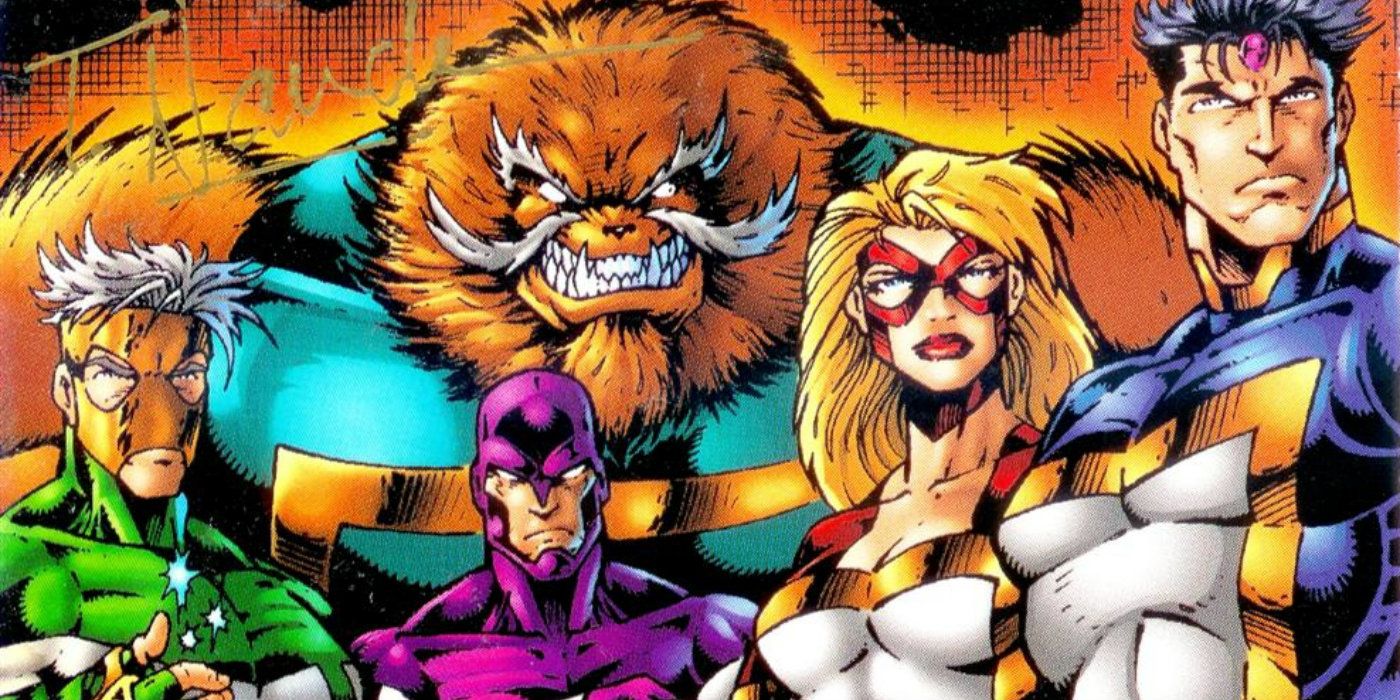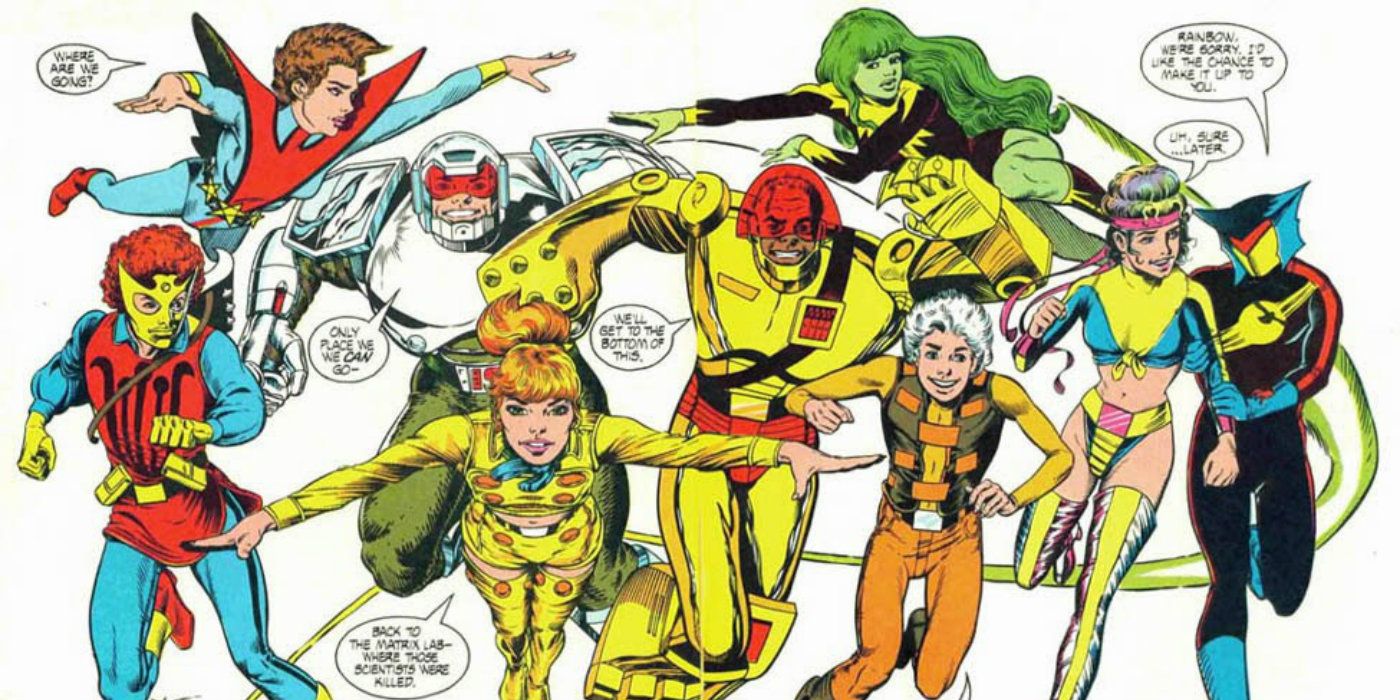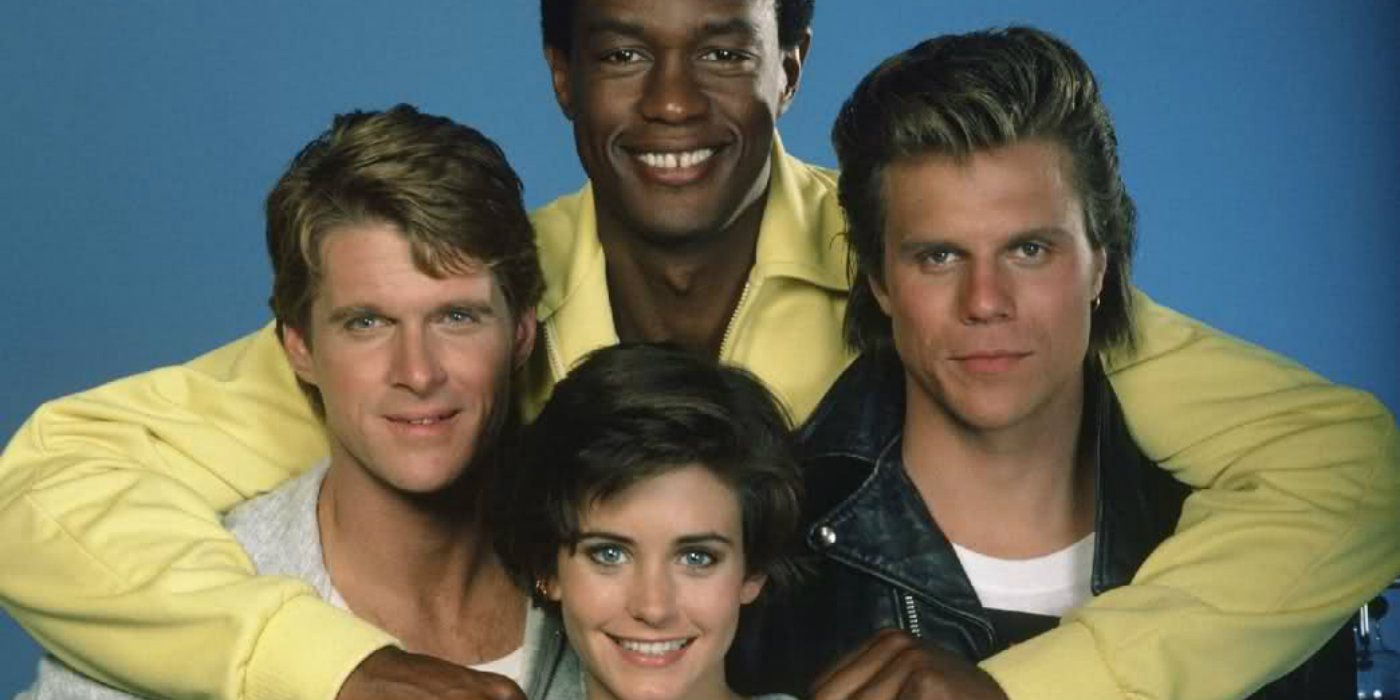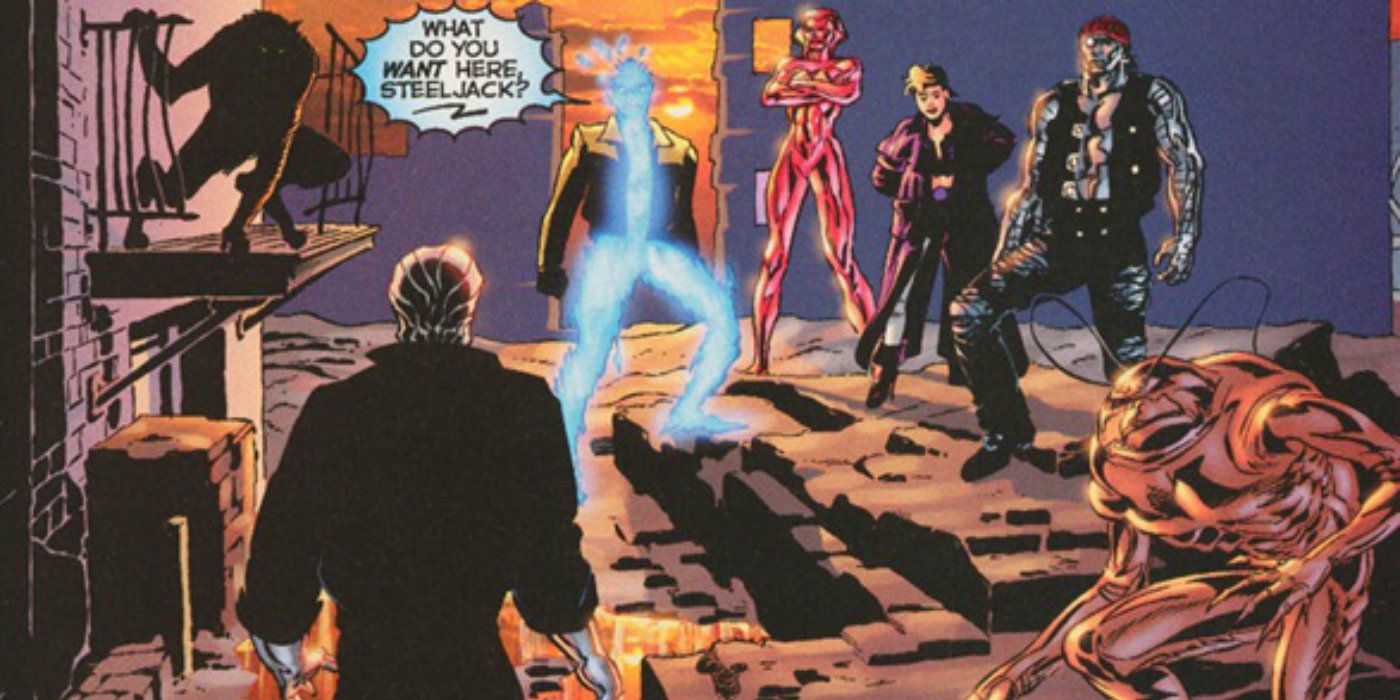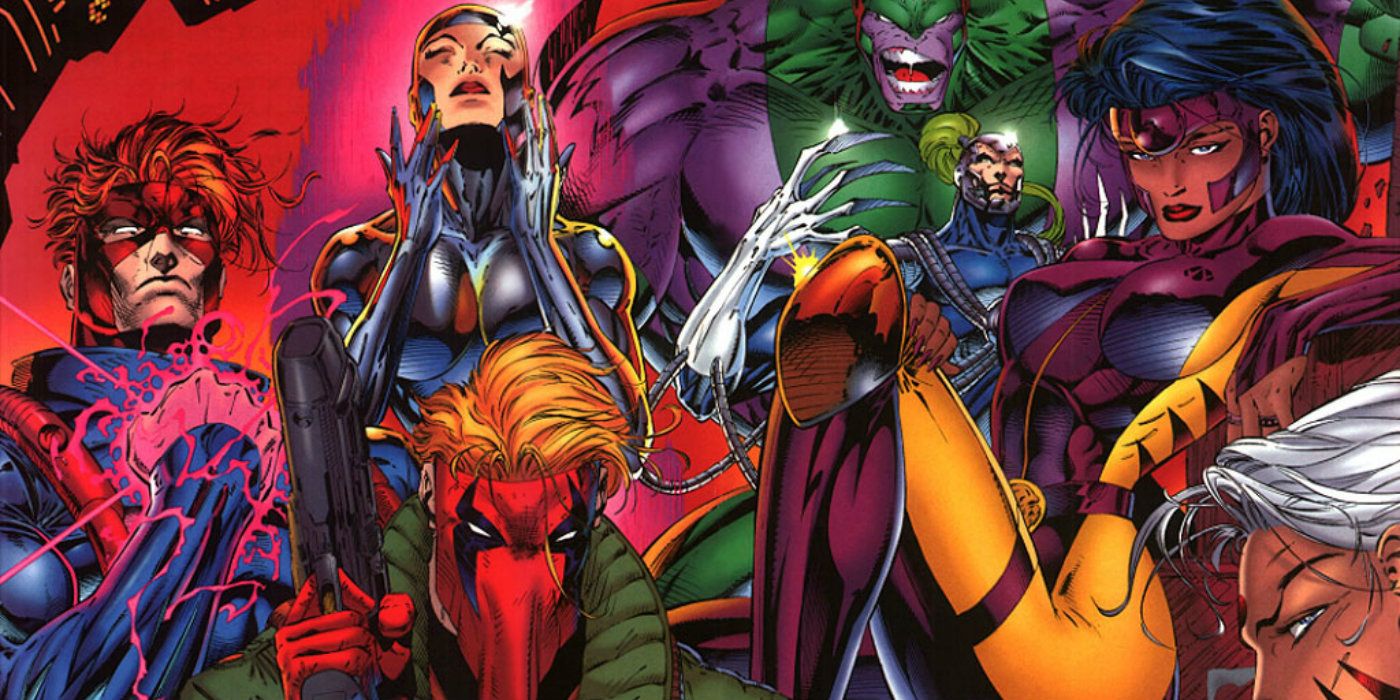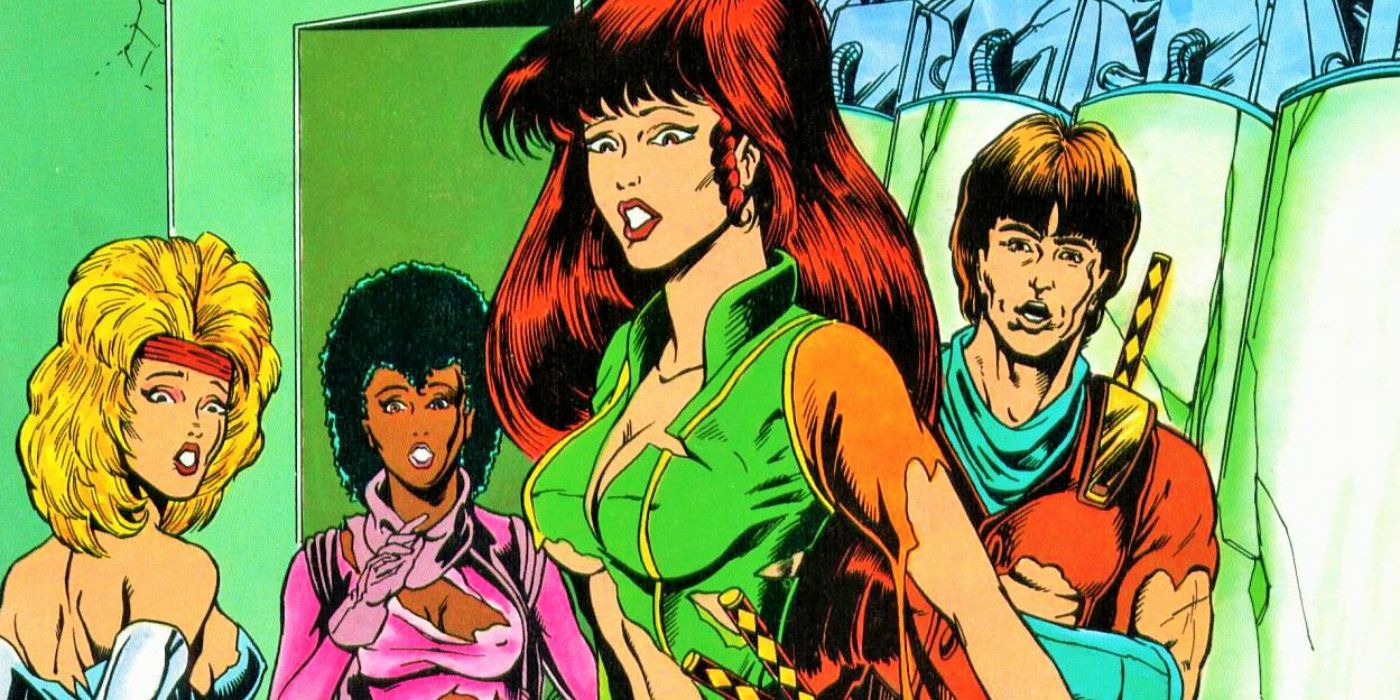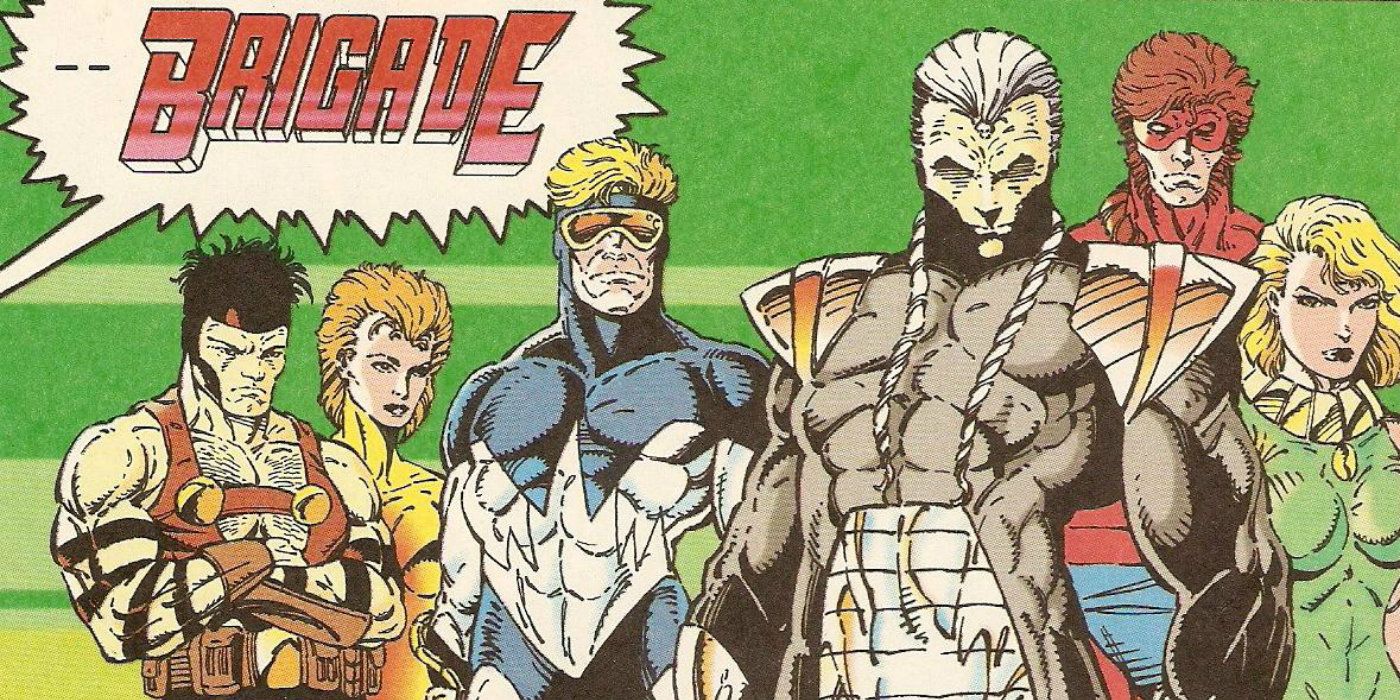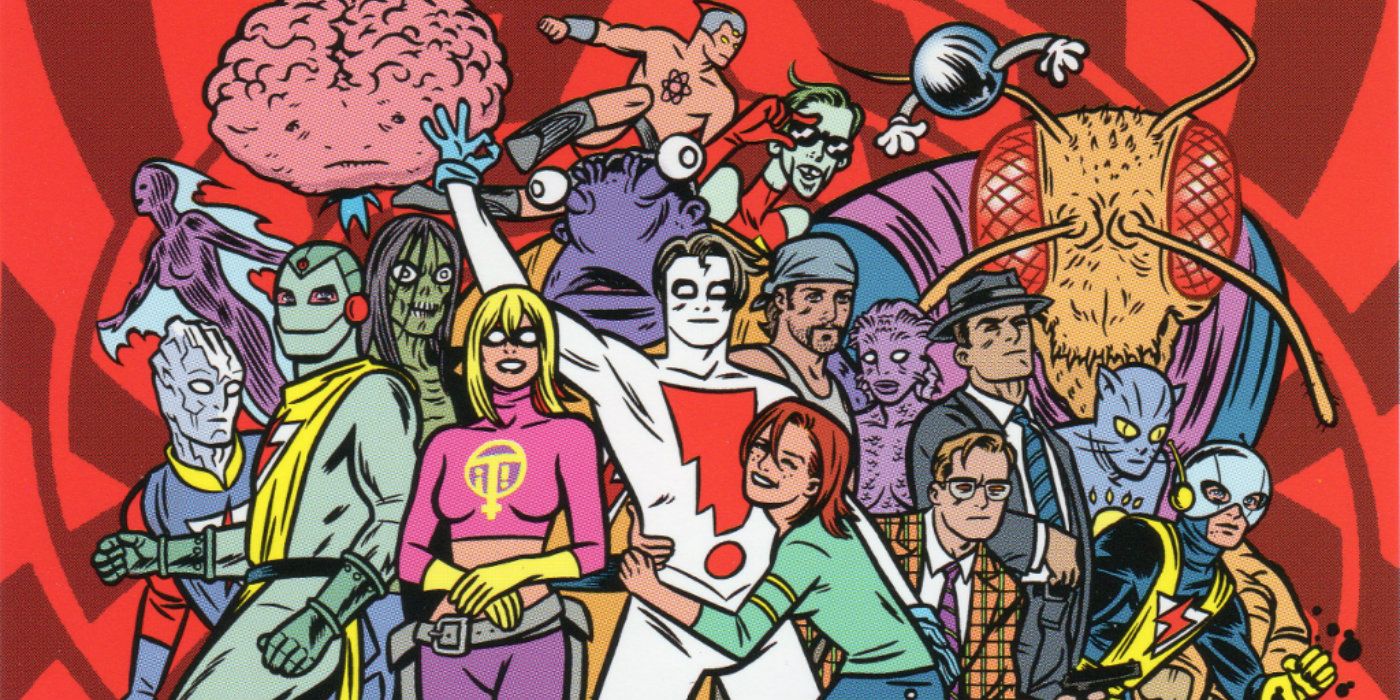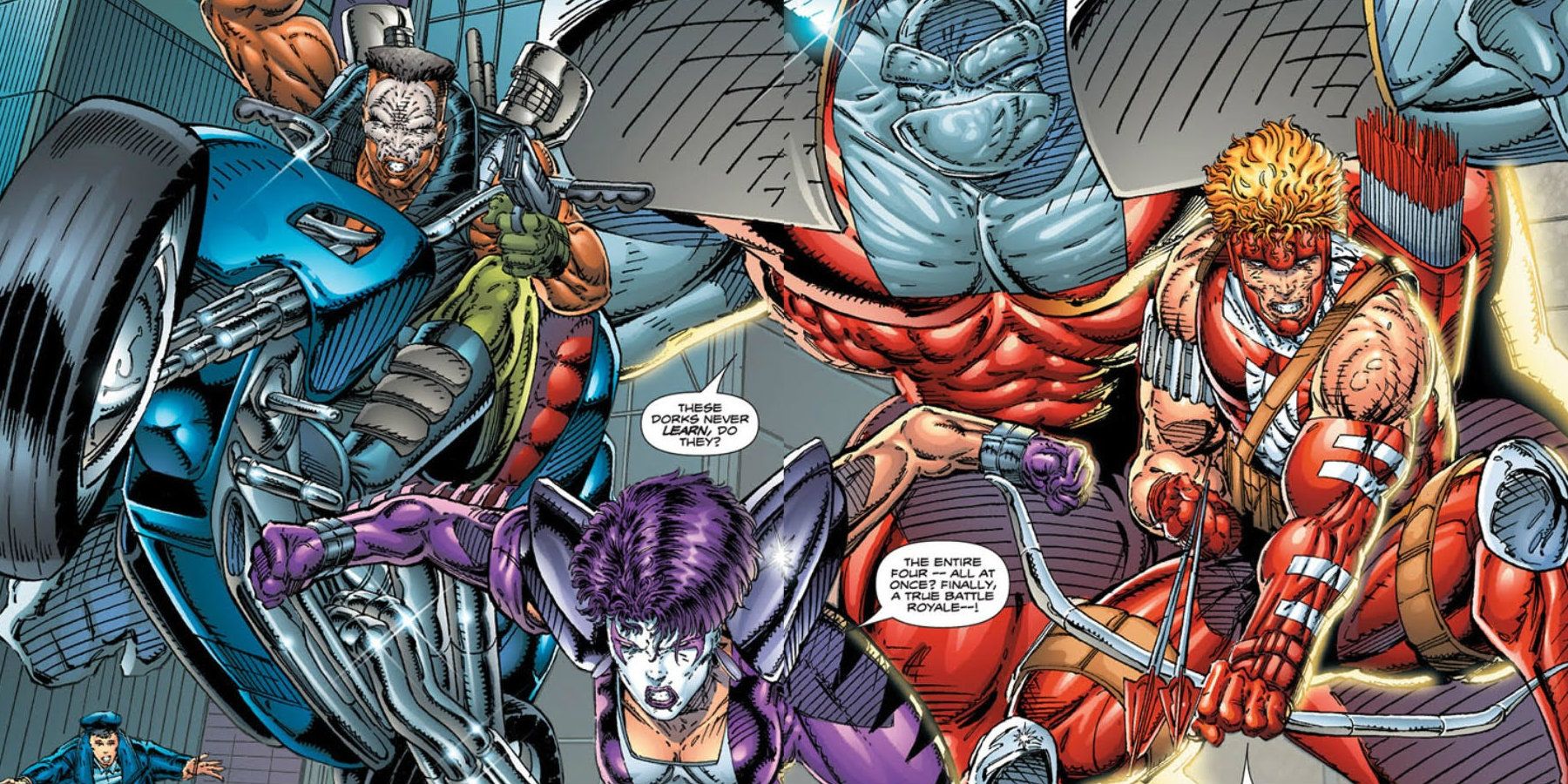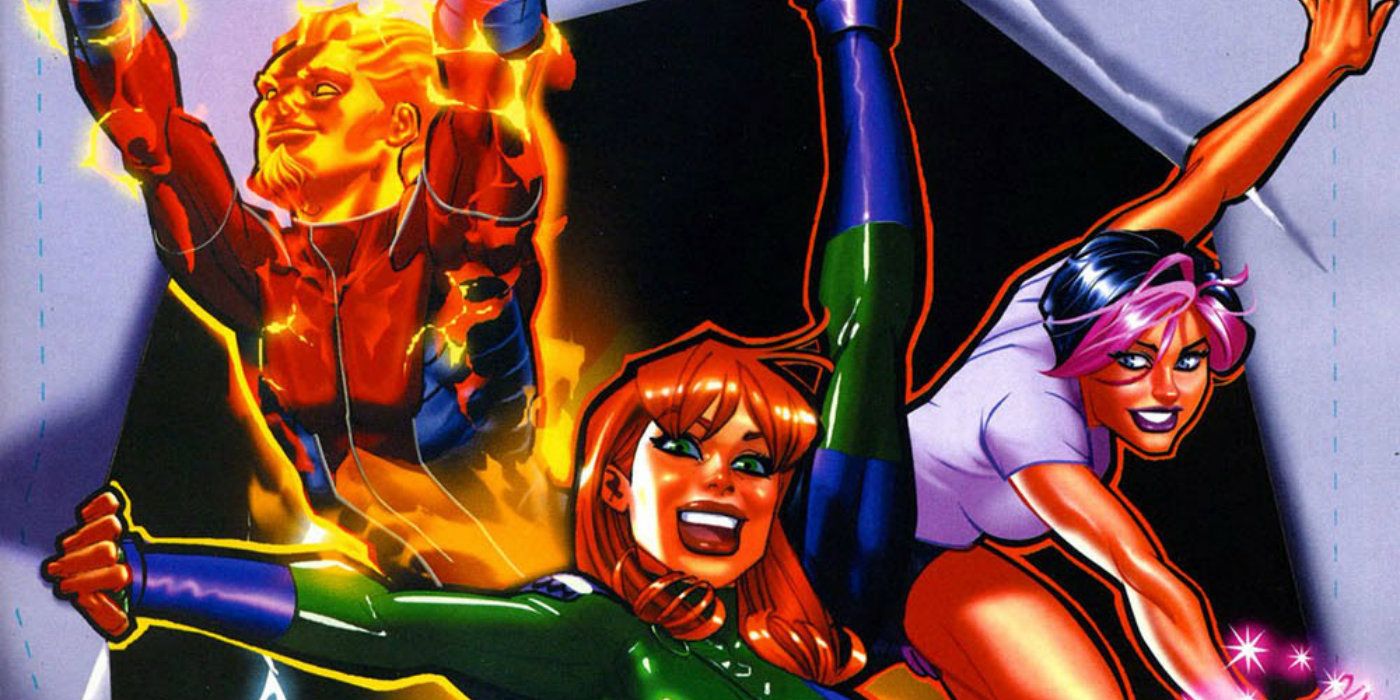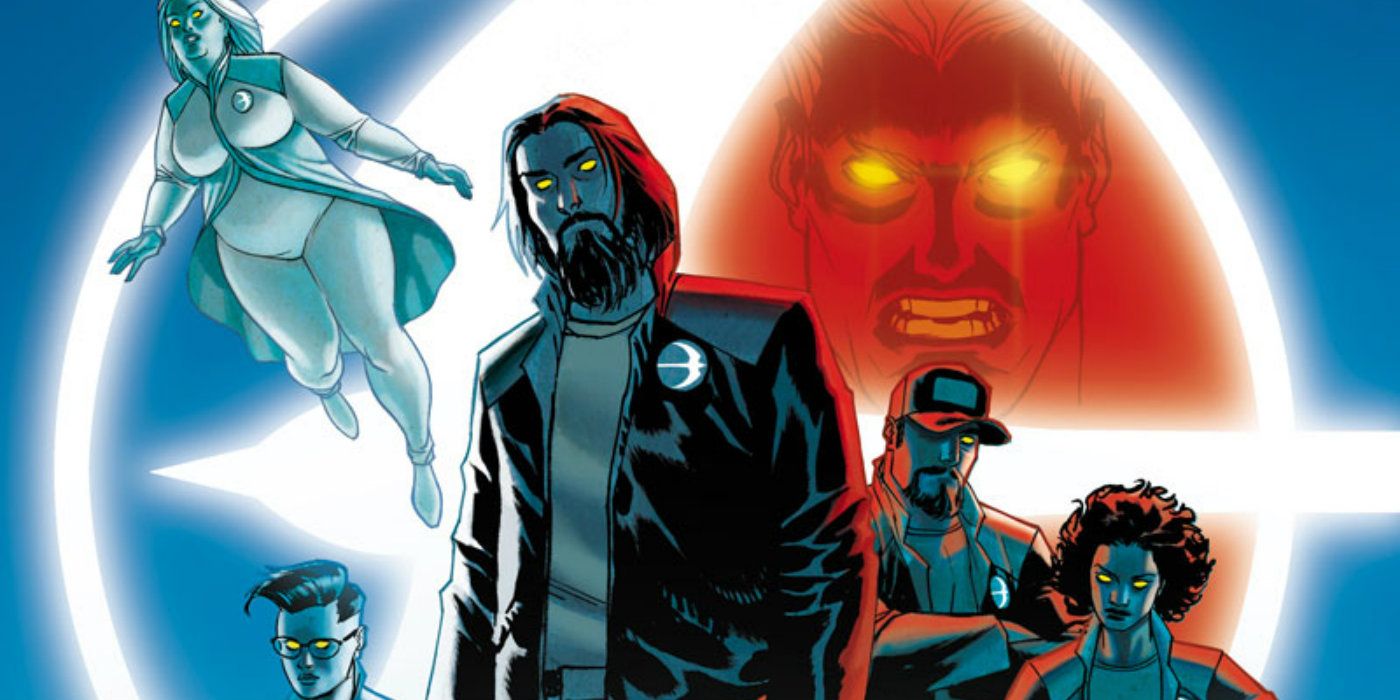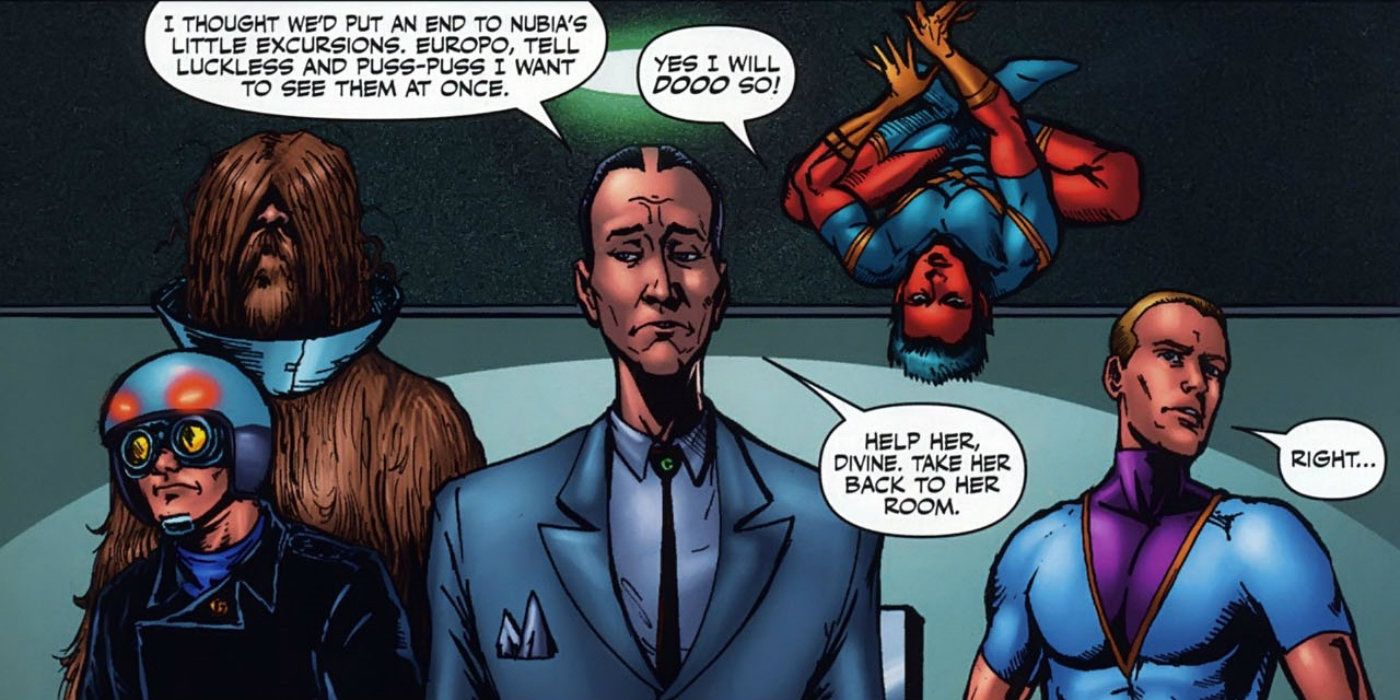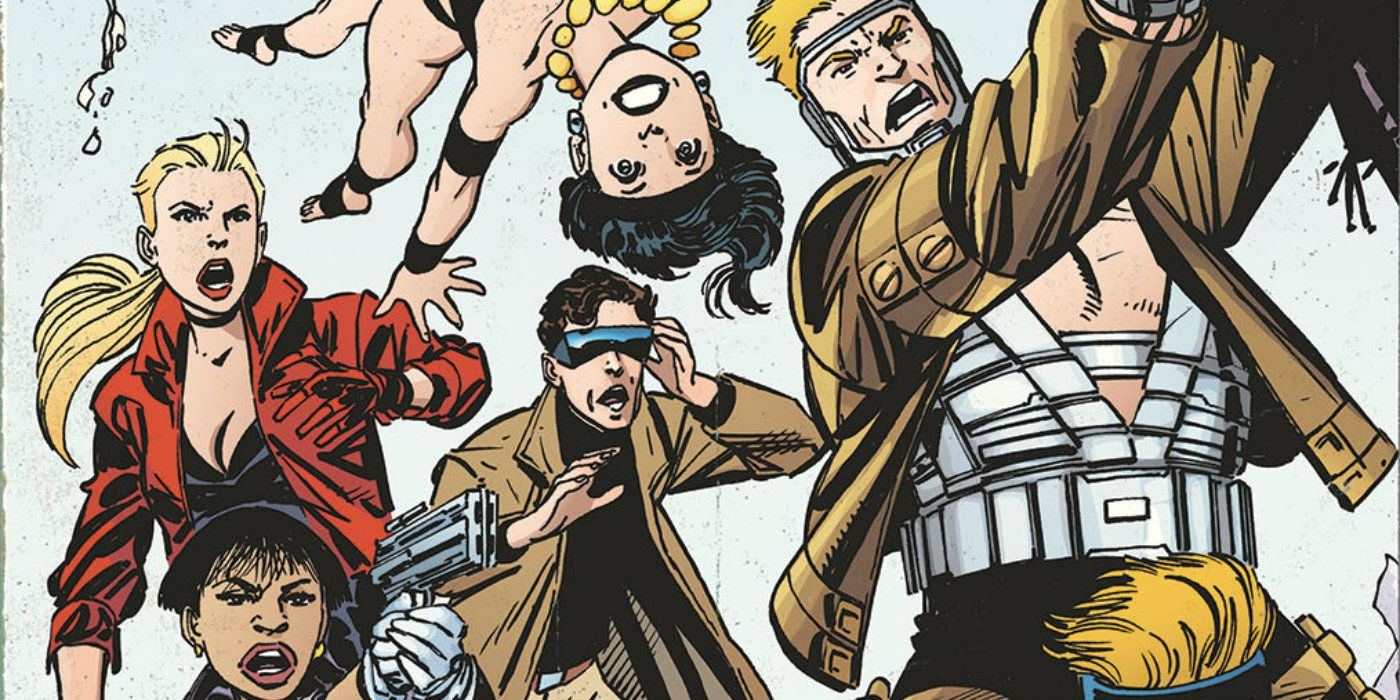For several years now, the X-Men franchise has been one of Marvel Comics’ most lucrative properties. Tapping into universal themes of self-discovery, family and prejudice, the X-Men’s message urges us to celebrate our differences and embrace the unique. It’s a potent hook, providing hope to countless outsiders who one day, too, would find a place to belong.
RELATED: Man of Steal: 15 Superman Copycats
In fact, their message was so well-received, there have been several attempts to copy the X-Men’s success, over the years -- some good, a few bad, others just plain abysmal. As Marvel gears up for a mutant renaissance in 2017, with a slew of new titles exploring the next chapter in their saga, we thought it was time to compile a list of the most blatant X-Men clones we could find. You know what they say: “Imitation is the sincerest form of flattery!” Or... is it?
SPOILER ALERT! Spoilers ahead for numerous stories from several different comics, movies and TV shows.
15 Miss Peregrine’s Home for Peculiar Children
A delightful series of young adult dark fantasy novels that explores the history of a hidden race of "Peculiars" through prose and vintage photographs, Ransom Riggs’ “Miss Peregrine’s Home for Peculiar Children” deftly welds together the dark enchantment of J.K. Rowling’s “Harry Potter” series, with the uncanny angst and colorful superhero action of the X-Men. Superhuman abilities stand in for magical talent, fusing tropes native to comics and high fantasy into a new and refreshing cycle of stories.
Drawing inspiration from the X-Men’s iconic School for Gifted Youngsters and its mandate of training and protecting its students from the ignorance of the outside world, Riggs’ novel follows the journey of 15-year-old Jonathan Portman, who discovers a secret home for young people with abilities (the aforementioned "Peculiars") existing in a time loop anchored to World War II. Under the tutelage of the titular Miss Peregrine, the students learn to use their innate abilities to protect themselves and others from the forces of darkness, as represented by the evil Hollowgasts. Most recently, the novel has been adapted to the big screen by Tim Burton, bringing the Peculiars’ X-Men-inspired struggle to a larger international audience.
14 Heroes
The first season of Tim Kring’s live action superhero epic literally exploded onto screens in 2006, instantly raising the bar for subsequent shows and films about people with superpowers. Boasting cutting edge special effects and an intriguing ensemble cast of well-realized characters, the series became a legitimate pop culture phenomenon overnight. Its signature catchphrase, “Save the cheerleader, save the world,” became ubiquitous amongst a geek culture starved for a credible TV vehicle for their superpowered fantasies.
As in the Marvel Universe, the mythology of “Heroes” establishes a race of people who are genetically gifted with superhuman abilities and who operate from the shadows to further their own agendas, or to hide from prying eyes. Kring unabashedly drew inspiration from comics in general, structuring each season or story arc as interconnected “volumes.” Although subsequent seasons of the show collapsed under the weight of its ever-expanding continuity, “Heroes” remains popular amongst comic book fans, who still praise its character-driven plots and realistic depiction of superpowers on the small screen.
13 New Men
Okay, so maybe the word “franchise” is a little strong when applied to our next entry, a largely forgotten Extreme Comics title from the minds of Rob Liefeld and Jeff Matsuda. Whereas our previous entries drew inspiration from certain aspects of the X-Men comics, “New Men” blatantly rips off Marvel’s mutant franchise. Not exactly known for his originality, Liefeld simply repackaged the concept of a race of genetically mutated humans as “Nu Genes,” using it as one of the cornerstones of his shared superhero universe.
The book’s premise revolved around a group of teenaged Nu Genes under the tutelage of a grizzled mentor, who trained them to use their powers to protect themselves from prejudice and violence. Sound familiar? It gets worse. Not content to steal only one of Marvel’s evolutionary offshoots of humanity, Liefeld dipped his fingers into the Inhumans’ cookie jar, rebranding Nu Genes as the products of experimentation by an advanced alien race. Despite a bland roster of retread superhero types and a patently unoriginal concept, “New Men” somehow managed to cobble together a cumulative run of over 20 issues. Go figure.
12
DNAgents
“DNAgents,” as the name implies, tells the story about a team of genetically-engineered operatives, who were created by the Matrix Corporation, in an effort to create the perfect super soldiers. Created by Mark Evanier and Will Meugniot, the book was initially shopped around to both DC and Marvel, who both saw elements in the property that would dovetail nicely with their existing universes. Ultimately, Evanier and Meugniot decided to publish the series through Eclipse Comics, in order to retain more creative freedom and the potentially lucrative TV and merchandising rights.
Although their powers stemmed from scientific experimentation and they were grown in vats, the DNAgents were all born with their unique abilities, like the X-Men. The team’s roster included examples of all the typical superhero types: Tank was super strong and durable, Surge controlled electricity, Sham was a shapeshifter. In the end, "DNAgents" was a relatively lacklustre idea from two creators who would go on to bigger and better things. The group was unceremoniously abandoned by its creators, written back into their cryogenic vats when their rebellious natures became too much to handle.
11 Misfits of Science
Long before “Heroes” floored television viewers with its dynamic, live-action depiction of modern civilian superheroes, “Misfits of Science” had blazed a similar trail in the mid-80s for a single season. Despite its short on-air lifespan, the show’s campy tone and cheesy special effects enjoy a solid cult following to this day. Recounting the misadventures of a band of so-called human anomalies with abilities such as telekinesis, size manipulation and the discharge of bio-electrical energy, the show was obviously heavily influenced by the notion of super-powered mutants, fighting to protect those who fear and hate them, even if the stakes were never as high as they were for Marvel’s merry mutants.
Granted, “Misfits of Science” was nowhere near as grim in its approach to superhero adventure as most “X-Men” comics. Typical threats faced by the Misfits each week included Martian invaders, Venice Beach cavemen and irradiated hamburgers that granted consumers super powers. (Can we have fries with that?) No wonder even series star Courtney Cox couldn’t save this good-natured misfit of a show from cancellation after only one season.
10 The Astro City Irregulars
In a list rife with passive swipes, blatant rip-offs and zany TV misfits, there’s more than a little space available for respectful tributes. Arguably the most respected and accomplished creator-owned superhero universe on the shelves today, “Astro City” explores all aspects of superhero mythology with unparalleled insight and passion. Creators Kurt Busiek, Brent Anderson and Alex Ross continue to delve into the unique conventions of mainstream superheroes through popular pastiches of classic characters such as the Samaritan and the First Family (Superman and the Fantastic Four, respectively). However, it’s their lesser known Astro City Irregulars we’re most concerned about here.
Although Busiek and company eschew the typical mutated genetic baggage present in most send-ups of the X-Men, the Irregulars evoke the same thematic tone as Marvel’s mutants, existing as strange outcasts who operate from the fringes of the wider Astro City universe. Their powers and appearances are often frightening to behold, causing no little fear and misunderstanding amongst the general public. Not much is currently known about the team, despite several cameos and brief appearances over the years, so we can’t help but hope the creative team explores the history of Palmetto, Skitter and their compatriots in more detail in near future.
9 WildC.A.T.s
Created by Brandon Choi and Jim Lee, the WildStorm Universe’s inaugural book chronicled the adventures of a “covert action team” dedicated to protecting the world from the alien Daemonites. To be fair, “WildC.A.T.s” owes less to the X-Men’s mutant origins than it does to the franchise’s visual tone and the team’s many galaxy-spanning adventures within the borders of the powerful interstellar Shi’ar Empire. Choi and Lee set their book against a complex science fiction backdrop hinging on the war between two powerful alien races called the Kherubim and the Daemonites.
Evoking the glory days of Chris Claremont, Dave Cockrum and John Byrne’s classic mutant space operas, which witnessed the X-Men interacting with numerous alien races and fighting alongside the Starjammers, “WildC.A.T.s” nonetheless managed to carve out its own identity and is typically one of the better-remembered early Image books. Even still, early designs recall Lee’s work on various X-titles and featured characters that were in no danger of breaking the mold any time soon. Surpassed in recent years by grittier, more realistic franchises like “The Authority,” “WildC.A.T.s” is set to return next year under the twisted guidance of Warren Ellis, as a part of his reimagining of the WildStorm Universe.
8 Ex-Mutants
Well, the title just about says it all with our next entry -- or so you would think. In one of the more shameless attempts to capitalize on the X-Men’s skyrocketing popularity, Dave Lawrence and Ron Lim chose the title “Ex-Mutants” for their 1986 post-apocalyptic actioner. Despite a name that surprisingly didn’t get their asses sued by a battalion of Marvel’s corporate lawyers, “Ex-Mutants” had little to do with superhuman misfits protecting a world that hates and shuns them. In fact, the title is quite literal.
In a world overrun by irradiated mutants, a three-eyed scientist selects five grotesques to serve as symbols of hope in a world bereft of humanity. His experiments grant them human appearances and highly-developed martial skills, so they go forth into the broken world armed with katana to inspire the dregs of humanity towards a brighter future. Now, some might argue Lawrence and Lim cleverly inverted the X-Men’s core conceit, but in reality, all they did was create a one-dimensional series that clumsily mashed together Marvel’s mutants and Mad Max, in a rather inelegant cash grab. But what do we know? The Ex-Mutants were at least popular enough to warrant their own video game.
7 Brigade
Another example of Rob Liefeld’s rampant fracking of the Marvel Universe for his own gain, “Brigade” was essentially a watered-down version of “X-Force” that oozed up to the surface of the comics landscape during the ‘90s. Much like the successful X-Men spinoff, “Brigade” chronicled the adventures of a young team of superpowered misfits under the leadership of a veteran of the Youngblood franchise named Battlestone. As with our previous Liefeld creations, the New Men, Brigade boasted a line-up of stereotypical superhero cut-outs standing in for their much more dynamic counterparts in the Marvel Universe.
Considering Liefeld’s contribution to the creation of X-Force, “Brigade” is one of several instances of the controversial creator cannibalizing his own ideas rather than coming up with something more original. Somehow surviving Liefeld’s frequent rebranding of his shared universe, “Brigade” was last seen as recently as 2010, when Image Comics published a single issue that attempted to reimagine the team as a strike force of genetically-enhanced warriors formed to turn back an alien invasion. You know, because that hasn’t been done before, either…
6 The Atomics
A good-natured parody of the X-Men from the singular imagination of Mike Allred, the Atomics first appeared as a group of coffee-swilling poet-types who were inadvertently transformed into the Mutant Street Beatniks by a female alien named Zenelle, who was on the hunt for her new husband Mott. Hailing from the planet Hoople (yup, you read that right), Mott fled to Earth because in Zenelle’s society, the wife tends to devour the husband after mating.
After the first stage of their transformation gave the Beatniks alien super-acne, they blamed Madman, who was besties with Mott. They subsequently became his sworn enemies. When it was revealed the disgusting skin condition only precipitated a more complete metamorphosis into clear-skinned superhumans with fantastic abilities, the Atomics and Madman became fast friends. A light-hearted romp that pokes fun not only at the X-Men’s mutant origins but also at the convoluted soap operatic sub-plots that have long been a staple of the franchise, Allred’s “The Atomics” is proof positive that parody is just as powerful a form of flattery as imitation.
5 Youngblood
Although it will always be remembered as the series that introduced Image Comics to the world, Rob Liefeld’s most popular creator-owned property was also no stranger to controversy over the course of its colorful publication history. Arguably a series that owes more to DC Comics’ successful “Teen Titans” franchise (itself a response to X-Men’s initial popularity), “Youngblood” also owes a debt to Liefeld’s tenure on books like “New Mutants” and “X-Force."
The premise of the book followed a team of teenage, government-sanctioned superhuman operatives, who used their status as high profile celebrities to secure lucrative endorsement deals, when they weren’t fighting evil. Admittedly, for the time, the celebrity angle was a clever twist on the standard superhero archetype, but character designs for heroes like the Shaft and Troll recalled Liefeld’s work for Marvel very, very closely. Still, the book remains a benchmark accomplishment in comics history, launching one of most dynamic and influential publishing houses around today.
4 Gen 13
Yet another Image Comics “homage” to the X-Men, this Jim Lee-Brandon Choi-J. Scott Campbell creation chronicled the manic misadventures of a team of super-powered teens who turned out to be the progeny of an ultra-secret government black ops unit. The “gen-active” teens of International Operations became fugitives when they broke out of the isolated, prison-like government facility where they first manifested their powers. Again, as with much of Image’s early output, there was little originality in the core concept of Gen 13, with each member fulfilling an archetypal superhero role.
Rather, the book traded on the intriguing soap opera of the teens’ true parentage and the popularity of J. Scott Campbell’s cheesecake art to win over fans. Although, the series takes a lot of flak from modern audiences for its over-sexualized depiction of teenaged girls, in its day, Gen 13 gave its mutant forebears a solid run for their money on the sales charts. The product of a style of comics that may one day go the way of the dodo, "Gen 13" will be a part of Warren Ellis’ WildStorm reboot next year -- presumably with more emphasis on original storytelling than on painfully-exaggerated female anatomy.
3 Harbinger
In recent years, Valiant Entertainment has built a reputation as an award-winning publisher of original superhero comics that rival the Big Two in quality and production. That isn’t to say that they aren’t guilty of a little swiping here and there. Take “Harbinger,” for example. One of cornerstones of the Valiant Universe, “Harbinger” details the history of an emerging sub-species of humanity called “psiots,” who are born with vast psionic powers, ranging from your run-of-the-mill telepathy and telekinesis to the ability to activate latent psiots with a touch. Psiots, of course, are widely feared and mistrusted by a general public largely ignorant of their existence. All sounds pretty familiar so far, right?
The series’ central conflict arises when a young psiot named Peter Stanchek rebels against the ultra-powerful Toyo Harada’s evil agenda, which depends upon the recruitment of a vast army of psiot warriors. Unlike some previous entries, “Harbinger” uses its similarity to the X-Men as a launching pad, quickly carving its own path with a more ominous tone and insidious antagonist. With “Harbinger Renegades” repositioning the series along more activist lines, Valiant has further departed from the series’ origins as a grittier version of Marvel’s X-franchise and allowed the book to establish its own distinct identity.
2 The G-Men
Some comic book writers use a scalpel. Others, such as Garth Ennis, prefer blunter instruments to get their point across. You know, something like a nail-studded baseball bat. That isn’t to say that Ennis isn’t capable of creating works of subtle nuance, it’s just that “The Boys” ain’t one of them. A provocative, subversive series that relished ridiculing the superhero archetype, “The Boys” didn’t just poke fun at the cape-and-spandex set, it skewered it on a rotisserie, then roasted it to a blackened husk. One of the series’ more controversial parodies was the sadistic G-Men and their myriad spin-offs. Based without any shadow of a doubt on Marvel’s mutant money-makers, the G-Men were formed by a middle-aged child molester named John Godolkin, who leveraged their ultra-cool outsider appeal into a multi-billion dollar corporate enterprise.
Dripping with Ennis’ venomous, whip-smart cynicism, the G-Men represent his condemnation of the corporate cookie-cutter comics franchises like the X-Men embodied for many years. Although some might consider the overt sexual predation and ultra-violence of “The Boys” distasteful, there’s no denying Ennis and co-creator Darick Robertson successfully shocked readers into re-examining their pull lists with their ballsy, no-nonsense deconstruction of the superhero myth.
1 Next Men
Last but definitely not least, our final entry comes from the mind of one of the X-Men’s most beloved creators. Still praised for his seminal run with Chris Claremont on “Uncanny X-Men,” artist John Byrne’s “Next Men” series explored the concept of genetically-superior antiheroes through the lens of a team that knew virtually nothing about the world they swore to protect. It sounds like semantics but the fact that the Next Men were raised in a virtual reality environment with little exposure to the outside world opened up all kinds of new storytelling avenues that were unavailable to Byrne while contributing to “Uncanny X-Men.”
Byrne also took a more pragmatic view of superpowers in “Next Men.” To his way of thinking, superhuman abilities came with unexpected consequences, such as a speedster with disproportionately developed leg muscles. Despite the subtle thematic differences and more realistic approach, it’s evident that Byrne drew upon his work on Marvel’s Merry Mutants for the development of the Next Men. Unlike several of our entries, in doing so, he created something new and vibrant from a concept that others utterly strip-mined for their own convenience.
These are only a few of the X-Men clones we uncovered in our investigation. Let us know who we overlooked in the comments!

